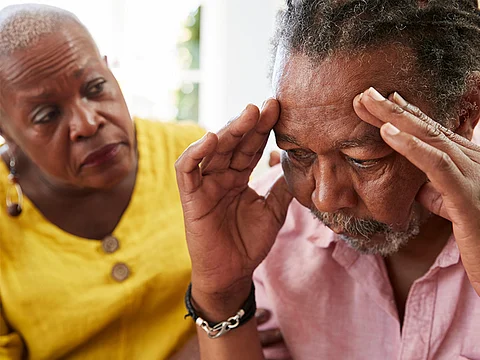MONDAY, Feb. 19, 2024 (HealthDay News) -- Millions of Black and Hispanic middle-class adults won’t be able to afford senior housing and health care expenses as they grow old, a new study warns.
The number of middle-income older adults of color is expected to double within the next decade, rising from 12% in 2020 to 25% in 2035.
But compared to the entire U.S. middle class, those folks will be the least likely to afford senior housing and care, researchers say.
The new study points to widening gaps among the Black and Hispanic middle class when it comes to home ownership, home equity, financial assets and marriage rates, when compared to their white peers.
As a result, Black and Hispanic seniors have fewer financial resources as they enter their golden years, researchers said.
“Wealth is not distributed evenly across the Forgotten Middle. Now we know that Black and Hispanic older adults are the worst off,” said researcher Sarah Rayel, senior director in NORC’s Health Care Strategy department at the University of Chicago.
“Black and Hispanic middle-income older adults have fewer liquid assets and less equity than other middle-income older adults, which is making it harder to leverage their home to support future housing and health care needs,” Rayel added in university news release.
The “Forgotten Middle” consists of older middle-income adults aged 75 and older who have too much money to qualify for Medicaid, but not enough to pay for assisted living, senior housing and the care they’ll need for age-related physical and cognitive challenges, researchers said.
Middle-income older adults have annual income and assets ranging from $26,000 to $130,000 in 2020 dollars, researchers said.
For the study, researchers relied on data from a long-term federally funded study on aging in America called the Health and Retirement Study. They specifically focused on people who were 60 and older in 2020, since they will be 75 or older by 2035.
The study specifically found that:
Fewer Black and Hispanic older adults tend to hold most assets in savings accounts, while white seniors have more assets in the stock market or an IRA
Home ownership rates among Black seniors are expected to fall substantially by 2035, limiting their ability to remain in their home or to sell it to move into senior housing
Only a quarter of Black older adults and 40% of Hispanic older adults are expected to be married by 2035, leaving those living alone at greater risk of adverse health events and social isolation
Black and Hispanic seniors tend to have higher rates of money-draining health complications, including chronic illnesses and mobility limitations
Rural seniors in particular will face severe challenges, the study says. They tend to have lower incomes, be in poorer health, face transportation challenges and lack support services.
“Every older adult deserves to age well with purpose, regardless of economic circumstances,” said Dr. Sarita Mohanty, president and CEO of The SCAN Foundation.
“The impending crisis facing people who won’t qualify for Medicaid and won’t be able to afford private home care will impact older adults of color much more acutely,” Monhanty added. “Policymakers, as well as the healthcare and senior housing communities, have substantial work to do to ensure that race does not become a hindrance to aging well.”
More information
NORC has more about its Forgotten Middle research project.
SOURCE: University of Chicago, news release, Feb. 15, 2024


